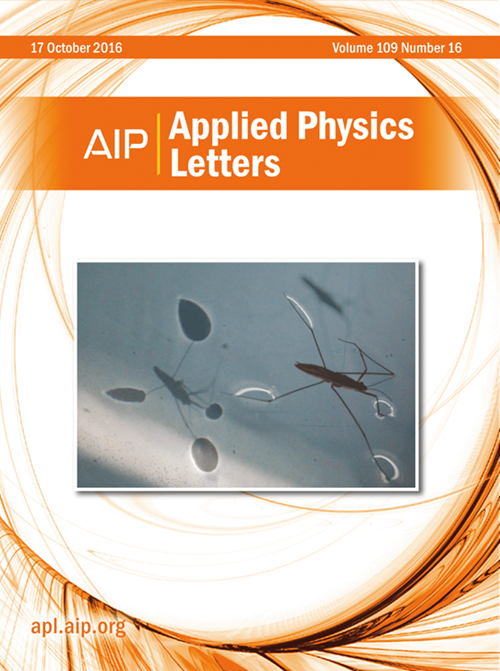Low crosstalk modular flip-chip architecture for coupled superconducting qubits
IF 3.5
2区 物理与天体物理
Q2 PHYSICS, APPLIED
引用次数: 0
Abstract
We present a flip-chip architecture for an array of coupled superconducting qubits, in which circuit components reside inside individual microwave enclosures. In contrast to other flip-chip approaches, the qubit chips in our architecture are electrically floating, which guarantees a simple, fully modular assembly of capacitively coupled circuit components, such as qubit, control, and coupling structures as well as reduced crosstalk between the components. We validate the concept with a chain of three nearest neighbor coupled generalized flux qubits in which the center qubit acts as a frequency-tunable coupler. Using this coupler, we demonstrate a transverse coupling on/off ratio≈50, zz−crosstalk ≈0.7 kHz between resonant qubits and isolation between the qubit enclosures>60 dB.求助全文
约1分钟内获得全文
求助全文
来源期刊

Applied Physics Letters
物理-物理:应用
CiteScore
6.40
自引率
10.00%
发文量
1821
审稿时长
1.6 months
期刊介绍:
Applied Physics Letters (APL) features concise, up-to-date reports on significant new findings in applied physics. Emphasizing rapid dissemination of key data and new physical insights, APL offers prompt publication of new experimental and theoretical papers reporting applications of physics phenomena to all branches of science, engineering, and modern technology.
In addition to regular articles, the journal also publishes invited Fast Track, Perspectives, and in-depth Editorials which report on cutting-edge areas in applied physics.
APL Perspectives are forward-looking invited letters which highlight recent developments or discoveries. Emphasis is placed on very recent developments, potentially disruptive technologies, open questions and possible solutions. They also include a mini-roadmap detailing where the community should direct efforts in order for the phenomena to be viable for application and the challenges associated with meeting that performance threshold. Perspectives are characterized by personal viewpoints and opinions of recognized experts in the field.
Fast Track articles are invited original research articles that report results that are particularly novel and important or provide a significant advancement in an emerging field. Because of the urgency and scientific importance of the work, the peer review process is accelerated. If, during the review process, it becomes apparent that the paper does not meet the Fast Track criterion, it is returned to a normal track.
 求助内容:
求助内容: 应助结果提醒方式:
应助结果提醒方式:


